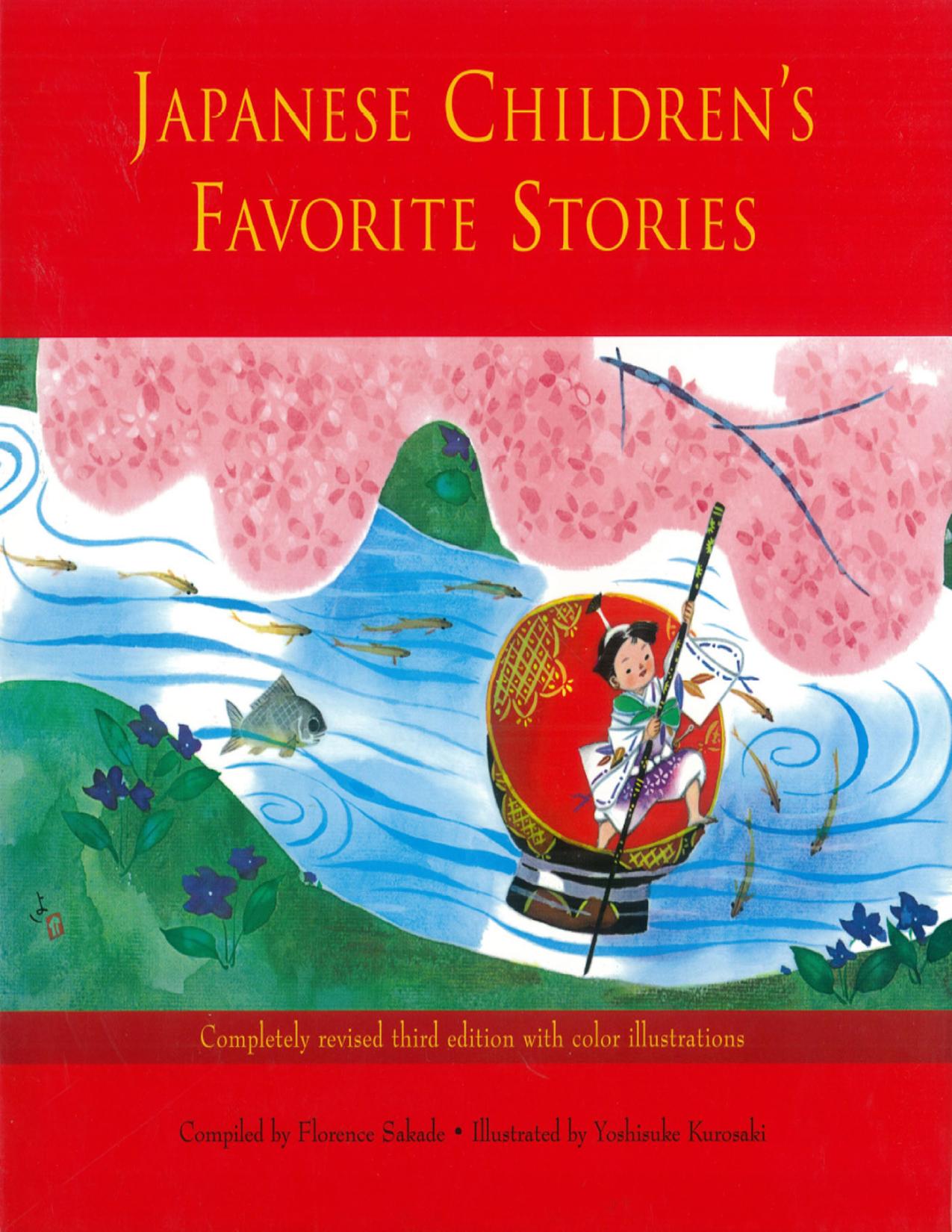
Japanese Children's Favorite Stories Book One
فرمت کتاب
ebook
تاریخ انتشار
2012
Lexile Score
850
Reading Level
4-5
نویسنده
Yoshisuke Kurosakiناشر
Tuttle Publishingشابک
9781462908103
کتاب های مرتبط
- اطلاعات
- نقد و بررسی
- دیدگاه کاربران
نقد و بررسی

August 18, 2003
Japanese Children's Favorite Stories, ed. by Florence Sakade, covers a range of characters, human and animal, from the "peach boy" who grows up to conquer a tribe of ogres, to the badger whose nose grows so long it reaches into the sky. These folktales from Japan feature fascinating characters and lessons of kindness and honesty. Originally published in 1953, this revised edition has all-new illustrations by Yoshisuke Kurosaki, which play up the magical qualities of the tales.

February 15, 2004
K-Gr 3-Fifty years after its initial publication, Sakade's compilation of popular Japanese folktales has been dusted off and prettied up for this new, third edition. Filled with now-familiar favorites, such as "Peach Boy" and "The Tongue-Cut Sparrow," along with lesser-known yet equally delightful tales, such as "Mr. Lucky Straw," this enduring collection presents 20 stories to enchant and enlighten young readers. Several of the tales can easily be compared with traditional Western counterparts: the main character in "Silly Saburo," for example, mirrors the follies of "Lazy Jack." Although a few of these tales have been made into fully illustrated picture books, this collection is greater than the sum of its parts. Minor text revisions have little effect on the stories, for the most part. "The Ogre and the Cock" has become "The Ogre and the Rooster," a "blue goblin" has been made over to green, and a formerly dead cat has been resuscitated and upgraded to merely "smelly." The text remains simple, clear, and accessible to beginning readers and storytellers alike. The "sparkling new color illustrations" are simply Kurosaki's original stylized scenes, repainted in bright dabs of watercolor. Most libraries will be glad to replace their well-worn older copies with this volume, in spite of (or perhaps because of) the fact that they are nearly identical inside.-Eve Ortega, Cypress Library, CA
Copyright 2004 Library Journal, LLC Used with permission.

February 1, 2004
K-Gr 3-Fifty years after its initial publication, Sakade's compilation of popular Japanese folktales has been dusted off and prettied up for this new, third edition. Filled with now-familiar favorites, such as "Peach Boy" and "The Tongue-Cut Sparrow," along with lesser-known yet equally delightful tales, such as "Mr. Lucky Straw," this enduring collection presents 20 stories to enchant and enlighten young readers. Several of the tales can easily be compared with traditional Western counterparts: the main character in "Silly Saburo," for example, mirrors the follies of "Lazy Jack." Although a few of these tales have been made into fully illustrated picture books, this collection is greater than the sum of its parts. Minor text revisions have little effect on the stories, for the most part. "The Ogre and the Cock" has become "The Ogre and the Rooster," a "blue goblin" has been made over to green, and a formerly dead cat has been resuscitated and upgraded to merely "smelly." The text remains simple, clear, and accessible to beginning readers and storytellers alike. The "sparkling new color illustrations" are simply Kurosaki's original stylized scenes, repainted in bright dabs of watercolor. Most libraries will be glad to replace their well-worn older copies with this volume, in spite of (or perhaps because of) the fact that they are nearly identical inside.-Eve Ortega, Cypress Library, CA
Copyright 2004 School Library Journal, LLC Used with permission.

December 1, 2003
Gr. 2-4, younger for reading aloud. This third edition, the fiftieth anniversary edition of a Japanese classic, has undergone minor cosmetic changes. The 20 stories remain intact, but color has been added to all of the pictures previously rendered in ink and wash. The pages are also slightly larger, allowing more white space. As with previous editions, sources are not cited and there is no index, but some of the stories, such as "Peach Boy," will be familiar to youngsters through American versions. This attractive new dressing should attract more children to the classic compilation of Japanese folklore.(Reprinted with permission of Booklist, copyright 2003, American Library Association.)

























دیدگاه کاربران